If you have an HVAC system, you can opt to run refrigerant lines underground to keep them out of the way. But there are some precautions you need to take when doing so. We have done research and put together a quick guide for you on running refrigerant lines underground!
For HVAC systems outside or a little further away from the house, running refrigerant lines underground is a good way of hiding copper lines. Here is a brief, step-by-step guide on how to do so:
- Prepare your materials.
- Choose the appropriate copper tubing. Make sure to use refrigerant copper or annealed copper.
- Prepare the underground channel and dig a ditch to pass the refrigerant lines through.
- Measure the right length of copper tubing and insulation you need.
- Insulate and waterproof the copper lines with corrugated tubing.
- Pass the lines through the ditch and pass them underground.
Keep in mind that refrigerant can only travel so far, so make sure the lines aren't too long. Minimize the distance between your home and the HVAC system as much as you can. For more insights on how to properly run refrigerant lines underground, keep on reading.
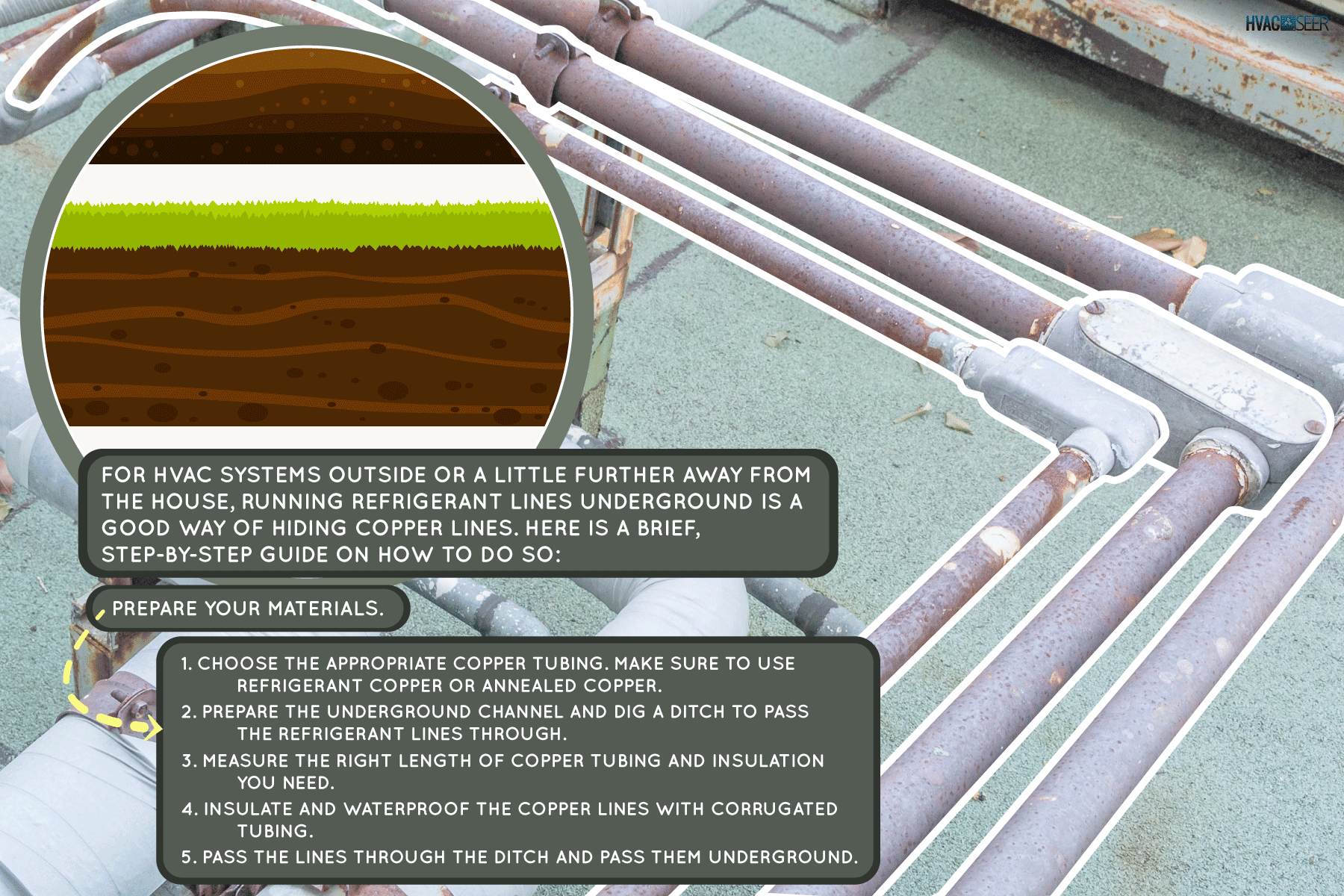
How To Run Refrigerant Lines Underground
Refrigerant lines should be set up in such a way that will not result in compressor failure. Badly installed underground lines are susceptible to damage. Dirt, water, and debris can seep through insufficient insulation.
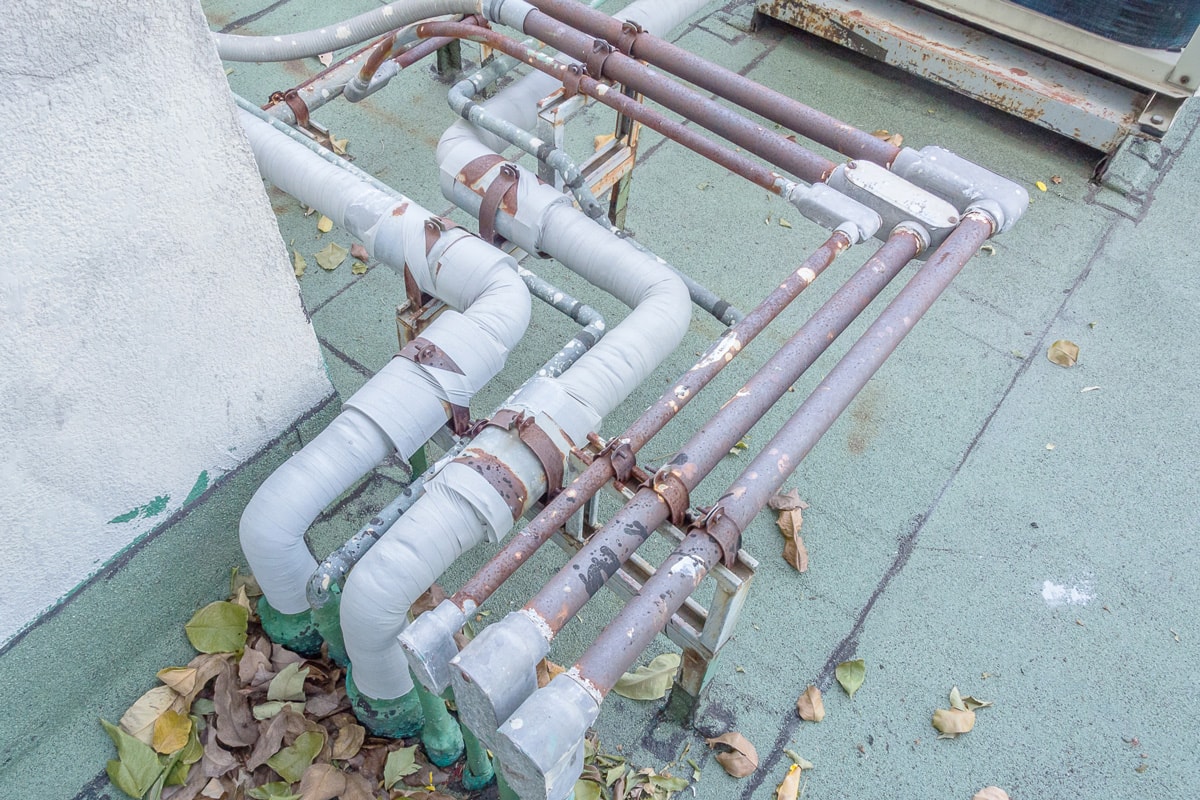
Lines can also go loose underground, and they are much tougher to repair than exposed lines. So it is important to take care with your initial installation to avoid any problems in the long run.
1. Prepare Your Materials
Select a line set that is long enough to accommodate the distance. A line set refers to the copper lines you hook up to the condenser.
It is always a good idea to put together your materials first in an accessible area so you do not miss anything.
For the most part, all you need is insulation, copper tubing, and safety tools that you might want to use for yourself in installation.
Click here to see Air Conditioner Line Set on Amazon
2. Choose The Appropriate Copper Tubing
Copper tubing keeps the refrigerant flowing through the system without leaking into the environment. Make sure to use annealed or refrigerant copper tubing.
Click here to see ACR Copper Tubing on Amazon.
This tubing can also be called ACR. It is specifically made for running refrigerant lines, as the tubing is resistant to oxidation and corrosion.
3. Prepare The Underground Channel
Before running any lines underground, you need to have preexisting ductwork under your house. This should already have been built with the house.
If you are planning to run refrigerant lines underground, you probably already have these channels in place. Dig a ditch that is big enough for the lines to go through.
Do not try to build underground ductwork yourself if you do not have the expertise. This could lead to the channel collapsing on itself or problems with your refrigerant line after installation.
4. Measure The Length Of Copper Tubing And Insulation You Need
Cut the copper tubing and insulation to size. To be safe, add a little allowance so you can account for the coils coming from the condenser.
5. Insulate And Waterproof The Copper Lines
Before running the copper lines underground, run them through the piping first. You will then attach this to your HVAC system on either end. Use corrugated tubing that is appropriate for the size of copper you have.
6. Pass The Lines Underground
Once you have prepared and put together your lines, it is time to assemble them! Pass the lines through the ditch you made underground through your HVAC ductwork.
How Far Can You Run Refrigerant Lines?
The refrigerant should be able to flow through the lines unobstructed. If it has to go too far uphill or too long across, your HVAC system will struggle. This could damage your system or cause it to malfunction.
As a standard, the maximum length for refrigerant lines is 200 feet, while for the lift, it is 60 feet. This will not typically apply for home HVAC systems, however, so the maximum distance is much shorter. A good rule of thumb is to have your condenser no more than 50 feet from your house.
Try to minimize the distance between your condenser and your house as best you can. This will make it easier for you to maximize the power of your system, since it does not have to work as hard to move the refrigerant back and forth.
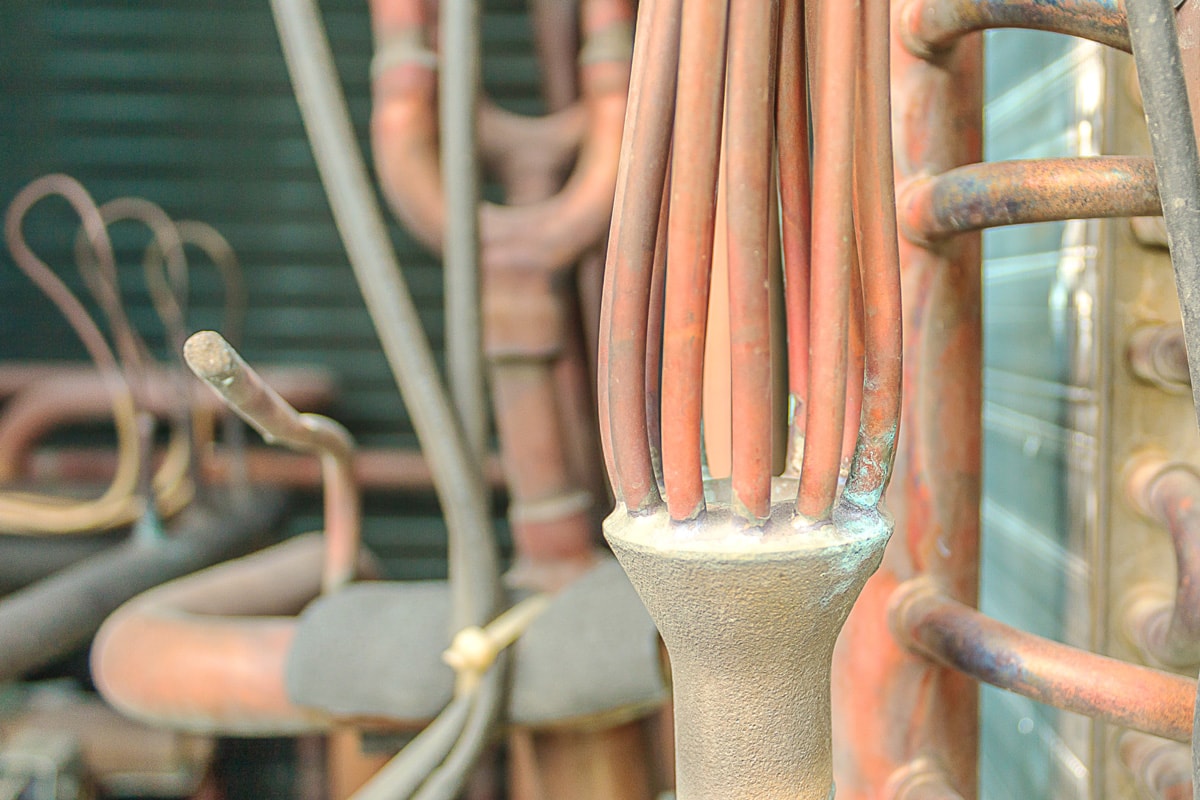
Another thing to note when running refrigerant pipes underground is that you have to make sure there are no landscaping obstructions around. Other fixtures, construction work, and the like may get in the way of your system running smoothly.
How Do Refrigerant Lines Work?
Why does the distance of your condenser to the house matter? Well, the refrigerant passes through these lines as liquid and gas. The lines you install come with factory-provided oil that helps the refrigerant move along the lines. If they are too far apart, the liquid will struggle to travel.
The refrigerant moves back and forth between the lines to heat or cool your HVAC system. These lines are hooked up to your heating system and air conditioners. When air gets in your refrigerant system, problems can arise.
Air In Refrigeration System
When air gets into your refrigeration system, it will affect its ability to condense the refrigerant. It obstructs the condensing surface area, which leads to high condensing head pressures. This prevents your refrigerant from flowing back into the line as it should.
Air in your refrigeration system is a result of an air leak. Aside from higher condenser discharge pressure, air also causes higher compressor outlet and refrigeration temperatures. You will notice air bubbles in the sight glass. This is a common problem, so you will need to fix it.
You can remedy air in your refrigeration system either by yourself or with the help of a professional. To fix it on your own, you can manually adjust the compressor.
Stop the flow of liquid to and from the condenser through the valves, pump all the gas into the condenser, and get the suction pressure a little over zero. Then close the suction valve for the compressor.
How Long Can Refrigerant Lines Last?
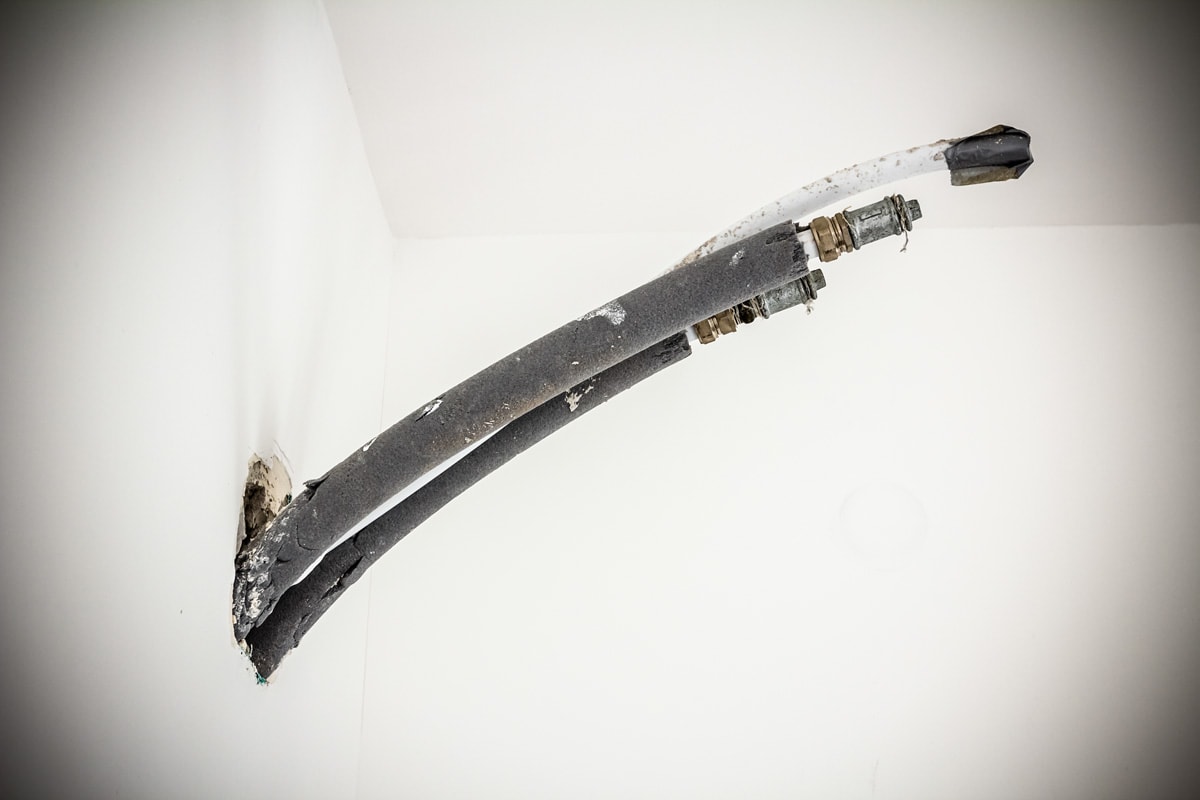
Refrigerant lines can last you for up to 25 years. This is about the same amount of time as a standard HVAC lifespan, which could be 10 to 25 years. So you can be confident that well-installed refrigerant lines will work well with your HVAC system up until the end.
In some cases, you may even reuse refrigerant lines. There are a few caveats to this, however. First of all, if you are upgrading your system, the line set should still be compatible with the new system's specs. Also, the lines must be free of all remaining oil and refrigerant.
Otherwise, you will have to replace your refrigerant lines when you are making an upgrade to your HVAC system, or there might be some damage to the lines, calling for a replacement or repair.
Refrigerant lines need to be replaced when there is mechanical damage, corrosion, or settlement. Corrosion is a result of contaminants coming into contact with the lines, while settlement will lead to air leaks, as we mentioned above.
Taking care of your HVAC system and refrigerant lines will help extend the lifespan of the system as a whole. If your refrigerant lines don't last at least 20 years, then there must have been an issue with them.
How Much Does It Cost To Replace Refrigerant Lines?

The price for replacing refrigerant lines varies. However, you can expect replacement to cost as much as the original installation, more or less. To give you an idea, AC repair starts from $150 and can cost as much as $2500 or more.
It is best to check with your local technician on rates. Some contractors will charge you per hour, so rates can vary.
Wrapping Things Up
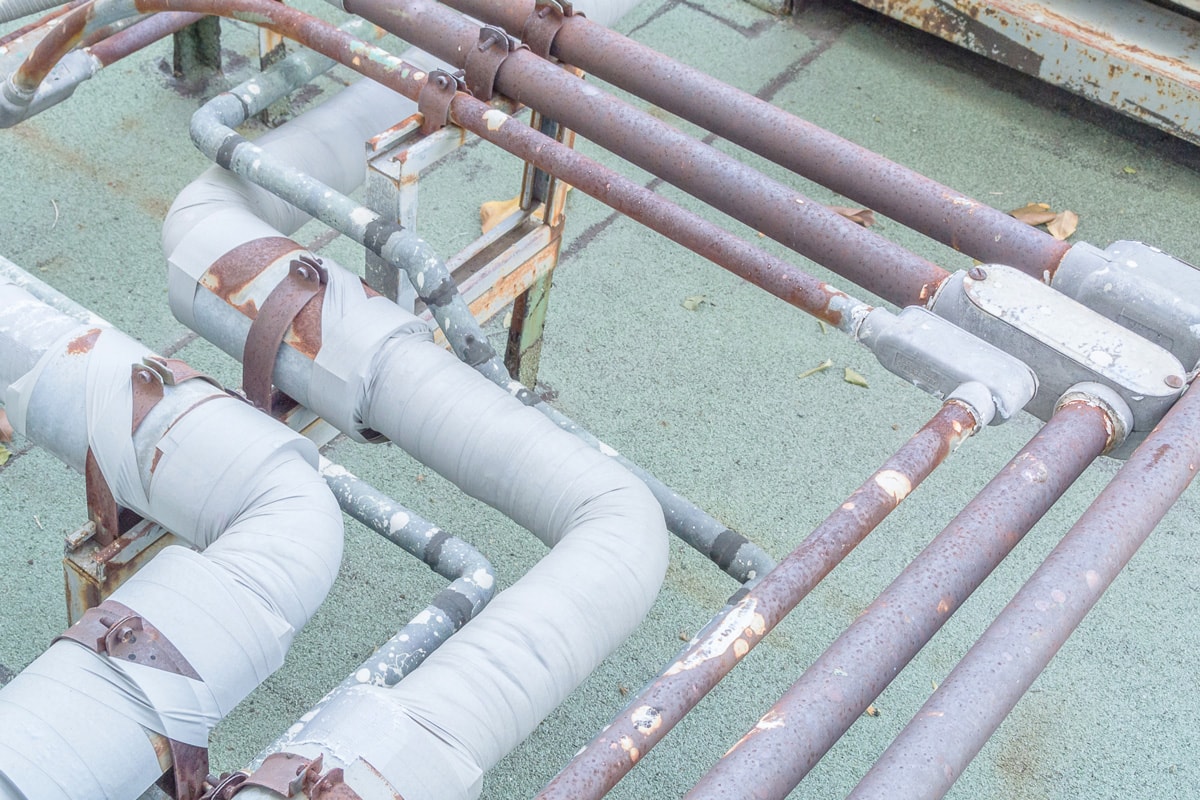
You can run refrigerant pipes underground by properly insulating them and running them through an underground HVAC duct. These lines will lead to and from the condenser to your house and will help heat and cool your HVAC system.
Ensure that the lines are within 50 feet long. This way, your system can maximize its power, and you can avoid poorly moving refrigerant, which can weaken the system.
Finally, if you are unable to run your refrigerant lines underground on your own, call a professional to do it for you. This will save you the trouble of any potential errors that could lead to more expenses in the long run.
Did you find this post helpful? If you did, check out our other articles before you go!


